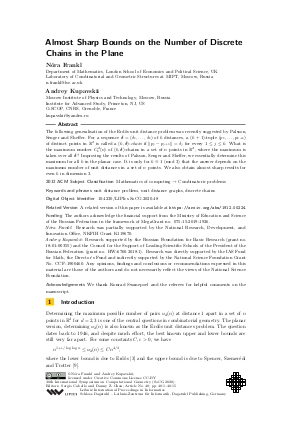LIPIcs.SoCG.2020.48.pdf
- Filesize: 0.54 MB
- 15 pages

 Creative Commons Attribution 3.0 Unported license
Creative Commons Attribution 3.0 Unported license











Feedback for Dagstuhl Publishing